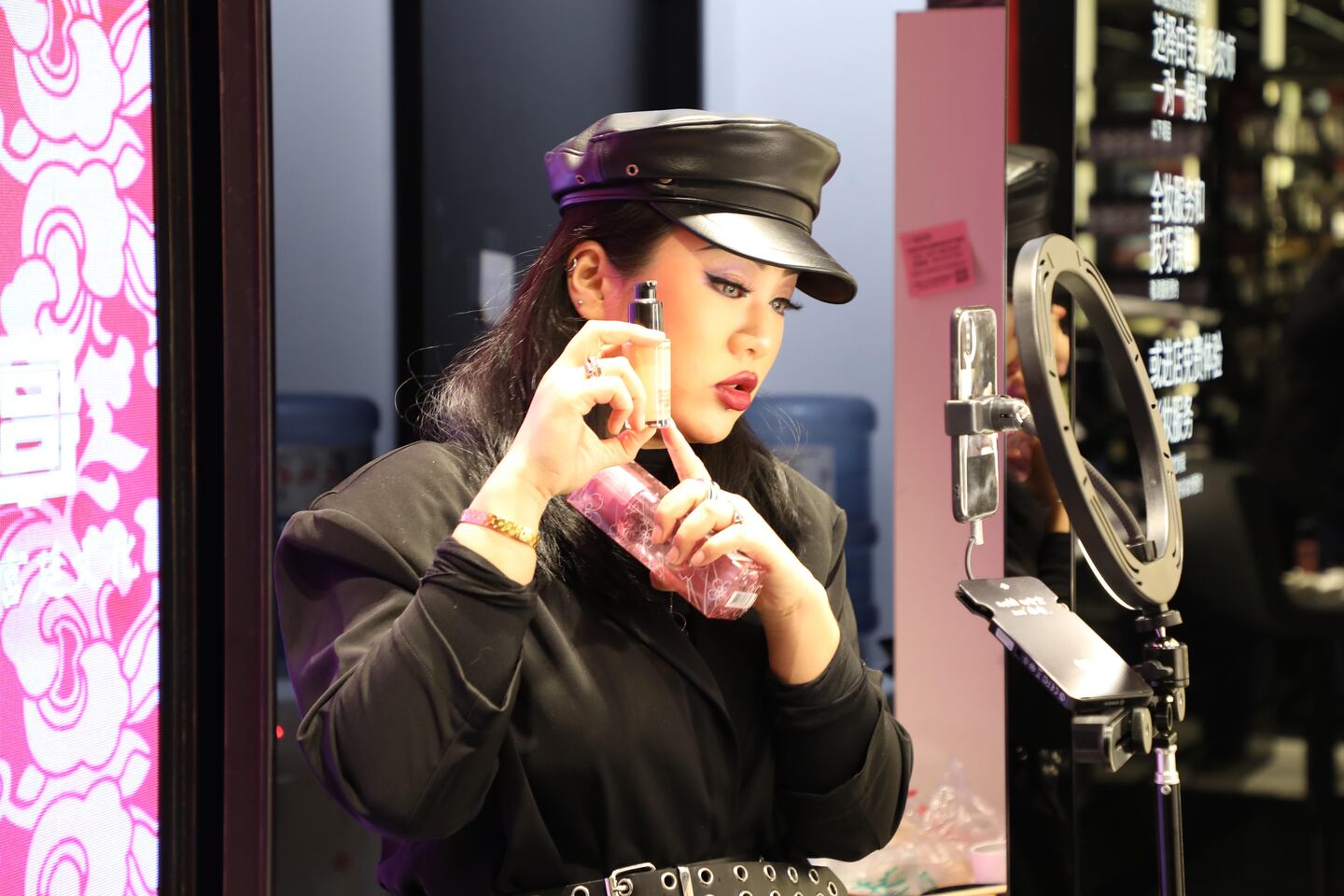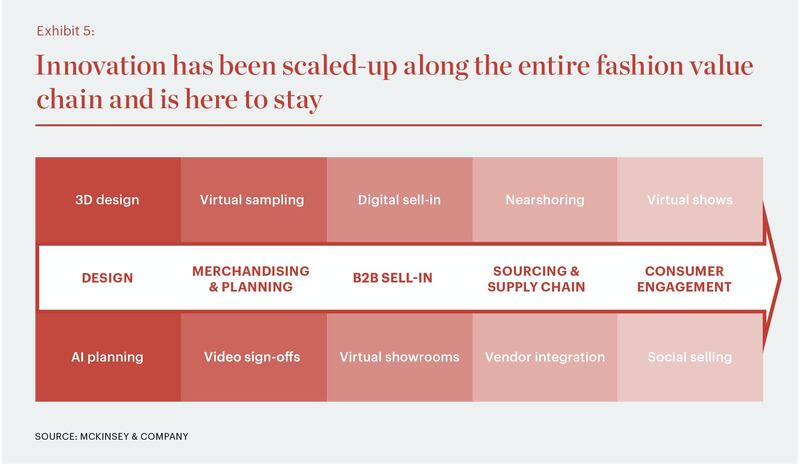
The Business of Fashion
Agenda-setting intelligence, analysis and advice for the global fashion community.

Agenda-setting intelligence, analysis and advice for the global fashion community.

This article appeared first in The State of Fashion 2020 Coronavirus Update, an in-depth report focusing on the themes, issues and opportunities impacting the global fashion industry in the wake of the coronavirus, co-published by BoF and McKinsey & Company. To learn more and download your free copy of the report, click here.
LONDON, United Kingdom — Necessity is the mother of invention. The coronavirus has sent shockwaves through the fashion industry, forcing companies to rapidly dispense with age-old industry practices and create new ones just to stay afloat. In doing so, it has exposed long-overdue upgrades required by a fashion system that is ripe for disruption.
Quick moves to halt production, close stores, find alternative revenue streams and identify new ways of working became necessary to navigate a shifting landscape of strictly enforced quarantines and social distancing, compelling fashion players to accelerate strategies that were at trial-stage just months ago into new operational realities. Some technologies that had been slow to take hold — think virtual fashion shows and digital show rooms, sample sign-offs in sourcing offices, livestream commerce and the latest 3D design tools — are now being relied upon to get business done.
As soon as the immediate firefighting subsides, brands should identify where to focus their attention and make longer term innovation investments. Technologies and processes successfully implemented during the crisis will have a profound effect on the industry’s future. With time, shoppers and business leaders will become acquainted with the benefits of new practices, causing them to stick. Asia will play a starring role in informing key investors of new opportunities.
ADVERTISEMENT
Use this time to reinvent how you do what you do... and in the process even reinvent your own brand.
“Don’t let innovation stop, because this could be the window of opportunity,” retail futurist Doug Stephens cautioned in March 2020. “Use this time to reinvent how you do what you do, bring consumers new alternatives, new value, and in the process even reinvent your own brand.”
Successful players will embrace new technologies and behaviours for the long haul, beginning with operating models and hiring strategies. Companies previously bound by physical borders are discovering the efficiency of cross-functional emergency teams and, as a result, will continue to break down silos between product teams and will rethink the necessity of in-person meetings and travel. They will also hire more across geographical borders, sourcing top talent internationally and setting up cells outside of headquarters to attract talent — much like Adidas's design lab, Brooklyn Creator Farm, which offers a global model. New habits are already being put to the test across the fashion industry, from an 84 percent rise in remote working to a 79 percent uptick in video conferencing and a 58 percent increase in flexible working hours. Investing in technology that enables efficient employee interaction will serve teams in the long term.
Specialist tech platforms catering to fashion — from digital wholesale showroom Joor to livestream start-up Hero — have already experienced a spike in demand, with the latter enjoying a 20 percent uptick in average orders placed during the first two weeks of March 2020 in the US when the coronavirus outbreak was gaining speed. This is not to mention the rising success of broader-use digital enabling services such as Zoom, which has seen its stock price spike more than 100 percent, and Slack, which has doubled its daily users since the outbreak began.
Fashion brands will also need to operate more flexibly across the value chain, cutting down go-to-market times and adapting more responsively to consumer trends and needs. For instance, designers and merchandisers will be empowered to make faster decisions and steer brands towards a demand-driven model with 3D technology, virtual sampling and AI-supported planning.

Production-wise, successful contingency plans executed during the pandemic — such as relocating production to Turkey while mainland China was on lockdown — will encourage brands to think laterally about normal production runs. Nearshoring will be accelerated in response to a heightened desire for products made closer to home. One outcome could be to leverage new manufacturing hubs for capsule collections, while backward integration and semi-automation could provide further support to increase flexibility of the supply chain and better prepare for future shocks.
Digitisation of wholesale has been much slower than its consumer-facing counterpart, but the rise of digital showrooms and new B2B practices will persuade more players that there are viable alternatives to the millions of physical samples that are produced for showrooms, and high intensity travel to traditional trade shows and fashion weeks.
Asics used technology to launch its new sneaker models. Unable to invite the international media to its Japanese headquarters during the lockdown, the company recreated its presentation in VR and shipped Oculus Quest headsets to journalists to watch the hologram. Elsewhere, Chinese showroom agency DFO utilised livestreaming during Paris Fashion Week to reach buyers in China and engaged double the number of people who would normally travel to Europe. Resulting orders, 95 percent of which were placed digitally, hit 80 percent of the agency’s sales targets.
Fashion players need to identify, prioritise and scale up innovations that worked and benefited them the most during the crisis.
With fashion shows and seasons completely wiped from the first half of the 2020 calendar and the September shows still hanging in the balance, the fashion cycle may also experience a long-overdue cadence shift. Fashion Week has been a growing pain point for the industry from a sustainability and investment standpoint with many viewing it as an antiquated resource vacuum. Resource-intensive destination cruise and resort shows need to be re-evaluated, as well as the idea of multiple fashion weeks in multiple cities throughout the year. The necessity for fashion to “skip a season” also offers an opportunity to sell products in-season, instead of bringing in deliveries earlier and earlier, so that winter clothes are selling in July. It will be up to bigger players to rethink the fashion cycle and catalyse real change by adopting new digital formats and setting an example for the rest of the industry.
ADVERTISEMENT
Brands will also innovate their products by integrating emerging consumer trends. For example, Chinese brand Cosmo Lady developed an antibacte - rial intimate wear line which capitalises on a niche product concept that now appeals to mainstream concerns for health and safety — a move that boosted its stock price by 21 percent.
Meanwhile, sustainability credentials will be employed as one method to regain consumers’ trust and wallets as they emerge from the discounting slump, as messages based on values are welcomed by more receptive ears. At the same time, alternative business models not based on generating virgin products, such as resale, upcycling and recycling, may see a boost from high levels of overstock in the system. However, consumers hit hard by a global recession will be more cost-conscious than ever and may consider sustainability in their purchasing decisions even less than before. Whatever the outcome, sustainability messaging will need to be grounded in authentic behaviour and rigorous internal practices.
For innovations to stick, brands need to strategically anchor them in their roadmap and operating methods, with substantial business model and process changes necessary to harmonise pre-and post-pandemic era approaches. Fashion players need to identify, prioritise and scale up innovations that worked and benefited them the most during the crisis, implementing a test-and-learn approach in a new world where speed is of the essence.

The app, owned by TikTok parent company ByteDance, has been promising to help emerging US labels get started selling in China at the same time that TikTok stares down a ban by the US for its ties to China.
Zero10 offers digital solutions through AR mirrors, leveraged in-store and in window displays, to brands like Tommy Hilfiger and Coach. Co-founder and CEO George Yashin discusses the latest advancements in AR and how fashion companies can leverage the technology to boost consumer experiences via retail touchpoints and brand experiences.
Four years ago, when the Trump administration threatened to ban TikTok in the US, its Chinese parent company ByteDance Ltd. worked out a preliminary deal to sell the short video app’s business. Not this time.
Brands are using them for design tasks, in their marketing, on their e-commerce sites and in augmented-reality experiences such as virtual try-on, with more applications still emerging.